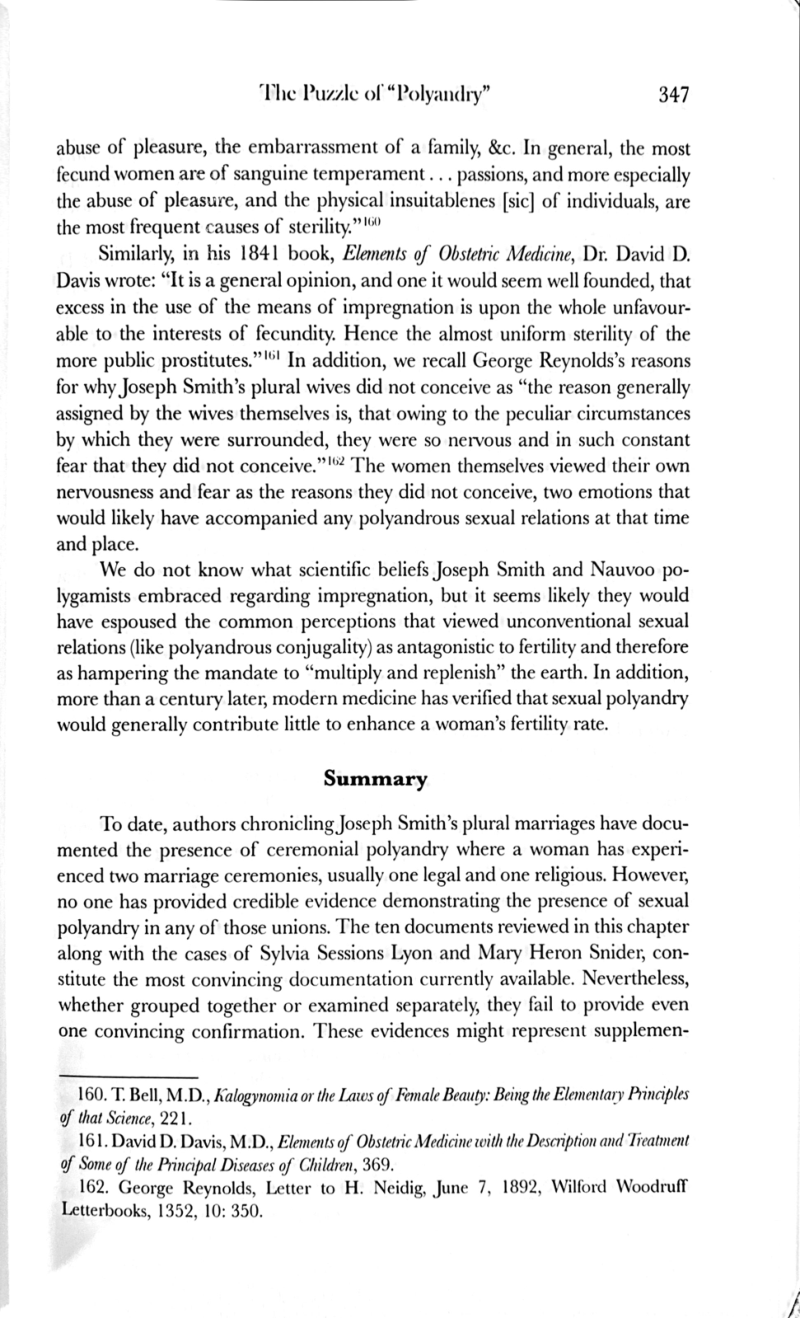Brian C. Hales discusses Joseph Smith's polyandry; concludes he did not practice "sexual polyandry" but merely "ceremonial polyandry."
- Type
- Book
- Hearsay
- Secondary
- Reference
Brian C. Hales, Joseph Smith's Polygamy: History and Theology, 3 vols. (Salt Lake City, UT: Greg Kofford Books, 2013), 1:347–348
- Scribe/Publisher
- Greg Kofford Books
- Audience
- Reading Public
- Transcription
To date, authors chronicling Joseph Smith's plural marriages have documented the presence of ceremonial polyandry where a woman has experienced two marriage ceremonies, usually one legal and one religious. However, no one has provided credible evidence demonstrating the presence of sexual polyandry in any of those unions. The ten documents reviewed in this chapter along with the cases of Sylvia Sessions Lyon and Mary Heron Snider, constitute the most convincing documentation currently available. Nevertheless, whether grouped together or examined separately, they fail to provide even one convincing confirmation. These evidences might represent supplemental corroboration that could be recruited to augment the credibility of other more reliable accounts. But the absence of even a single credible source that was close in proximity geographicaly and/or chronologically to the reported behavior, creates evidentiary challenges for all supporters.
While two accomplished polygamy researchers, Larry Foster and D. Michael Quinn, have presented the case of Mary Ann Darrow Richardson's marriages to Charles Edmund Richardson and Fredrick Cox as sexual polyandry a close examination of documents supports, rather, a strange sequence of consecutive priesthood cancellations and marriages that did not include polyandrous conjugality.
In his well-researched essay, D. Michael Quinn has accumulated much circumstantial evidence, accompanied by his own interpretations, to assert the existence of sexual polyandry in several of Joseph Smith's plural marriages to legally wed women. However, this compilation once again lacks even one solid piece of documentation and manifests multiple analytic weaknesses.
Doubtless the reason commonly given (and developed in greater detail during the Utah period as polygamy became more widely practiced)-that plural marriage (polygyny) would fulfill the commandment "to multiply and replenish the earth" (D&C 132:63) played a role in the development of polygamy theology, even as carly as Nauvoo. However, Nauvoo pluralists would probably not have viewed such unconventional sexual relations as increasing fertility or assisting in replenishing the earth, a physiological reality verified a century later by medical science.
- Citations in Mormonr Qnas
The B. H. Roberts Foundation is not owned by, operated by, or affiliated with the Church of Jesus Christ of Latter-day Saints.

